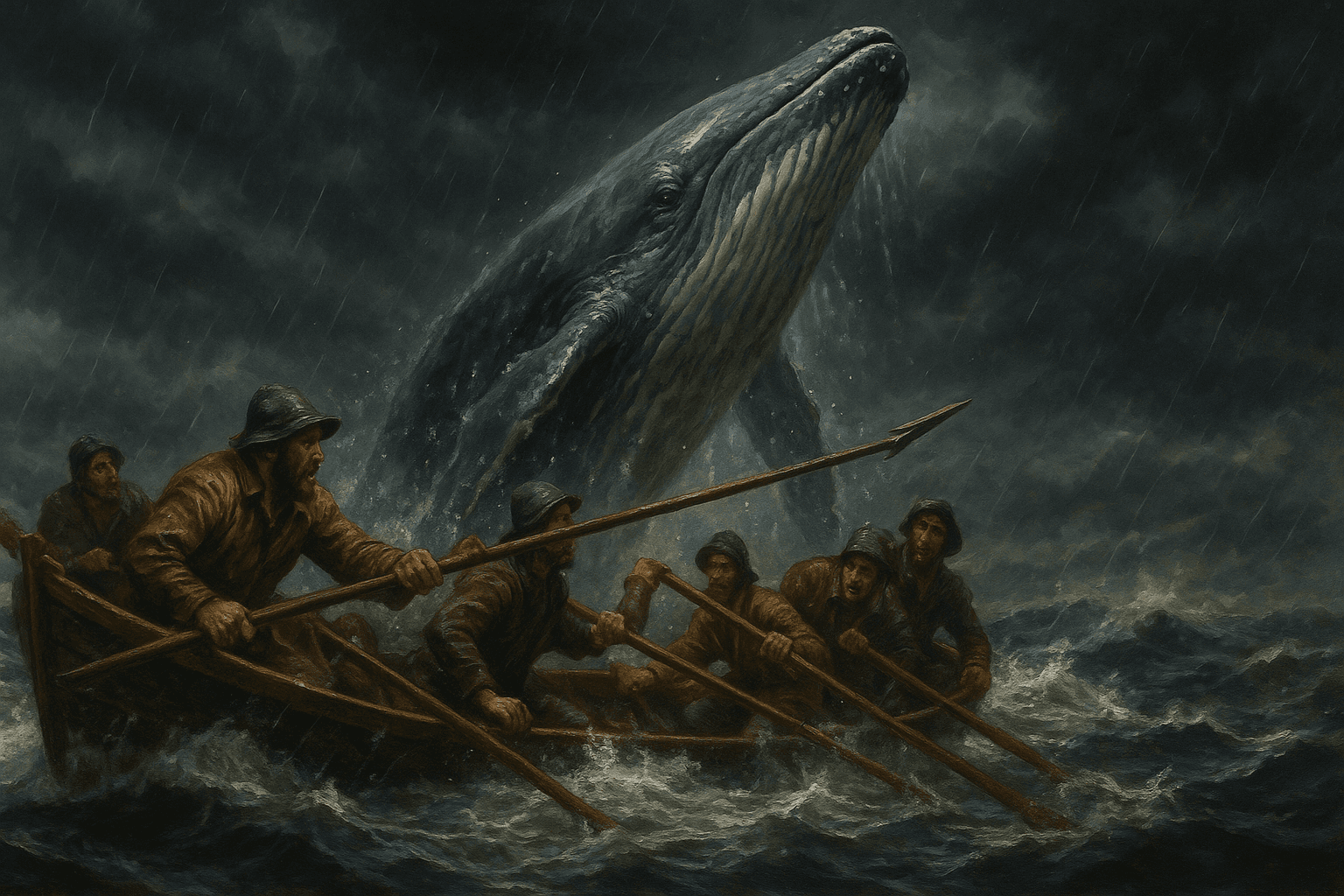The Brutality of Whaling in Moby Dick: A Deep Dive into Human Obsession and Nature's Fury

Whaling has a long and tumultuous history, and Herman Melville’s Moby Dick delves deep into the myriad ways this brutal industry shapes the lives of those involved. From the very beginning, we witness Ishmael’s romantic notions of the sea gradually stripped away by the harsh realities of whaling life. The initial allure quickly gives way to a darker narrative, as we see the impact of this trade on both men and whales.
The brutality of whaling is evident in the vivid descriptions of the hunt itself. When Stubb and the crew chase their prey, the excitement is palpable, yet it’s layered with a sense of foreboding. Capturing a whale means entering a world filled with chaos, danger, and bloodshed. As the boats lower into the water, the thrill of the hunt is tinged with the knowledge that they are about to engage in a violent struggle against nature. This juxtaposition of exhilaration and horror encapsulates the essence of whaling, where the adrenaline rush comes at the cost of profound suffering.
Melville doesn’t shy away from portraying the physical toll that this lifestyle takes on the crew. The harpooneers are depicted as both skilled and vulnerable, their lives hanging in the balance as they battle these colossal creatures. The harpoon, a tool of both beauty and brutality, serves as a poignant reminder of the duality of existence in the whaling world. It symbolizes not just the conquest over nature but also the violent relationship between man and beast.
Captain Ahab's obsession with Moby Dick furthers this exploration of brutality. Ahab is not merely hunting a whale; he is embroiled in a vendetta that drives him to madness. His relentless pursuit of the white whale blurs the lines between man and nature, revealing the destructive power of obsession. Ahab’s monomaniacal fixation reflects the darker side of humanity, where the quest for vengeance can lead to a self-destructive path. As he rallies his crew to join him in this quest, one cannot help but feel the weight of the moral complexities at play. The crew, drawn into Ahab's frenzy, become complicit in the brutality that ensues.
Moreover, the narrative delves into the ethical implications of whaling. The stark contrast between the grandeur of the whale and the horror of its slaughter raises important questions about human existence and our relationship with the natural world. The whales are not mere commodities; they are sentient beings whose lives are abruptly cut short by the greed and ambition of men. This theme resonates throughout the novel, culminating in the catastrophic final chase, where the ambition of Ahab leads to the destruction of the Pequod and its crew.
In conclusion, Moby Dick serves not only as a tale of adventure but also as a profound meditation on the brutality of whaling. Through vivid imagery and complex characters, Melville captures the chaotic interplay between obsession, nature, and morality. The novel urges readers to reflect on the costs of our pursuits, prompting us to consider how the quest for dominance over nature can lead to devastating consequences for both humanity and the natural world.
Books: Moby Dick; Or, The Whale
Authors: Herman Melville
Publishers: Public Domain